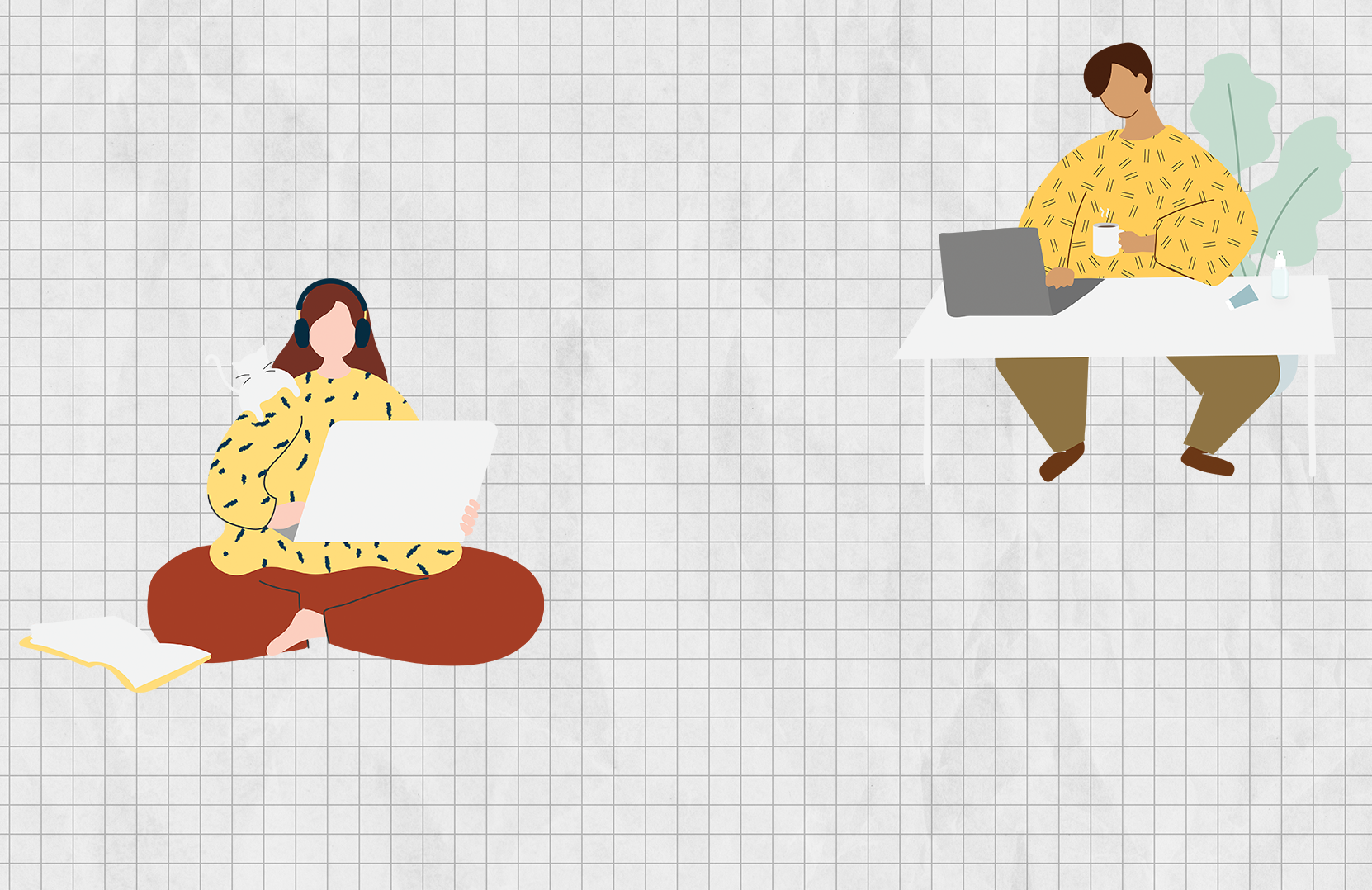There is a decent chance you’re working from home, a really good chance you’re taking classes from home, and an ever-present recommendation from health experts to stay home as often as you can. While we had a little taste of how this would affect school work late last spring semester, COVID-19 protocols during that time were chaotic and mostly reactive, and the semester was so close to being over that you probably didn’t have the chance to settle into a proper routine that would sustainably allow you to get everything done. This year is certainly going to be quite different from others, and will probably be more challenging, especially if you are not used to studying from home. By default, our homes look and feel different from places intentionally organized for doing school work, and it can be hard for our brains to negotiate the need to be productive while in a space that is generally just for hanging out. There are a few things you can do, however, to help your brain out in this matter.
Set your boundaries
The biggest challenge of being home is satisfying the psychological need to separate work, school, and free time. It can be hard for your brain to break into a productive state at home because we make associations between certain locations and work and relaxation, respectively. If you don’t have those separate locations to move between, the best thing you can do is create environments for working and not working within your home that are as distinct as possible.
A part of this amounts to setting up physical boundaries. If you have a room or isolated corner in your home that you can designate for work and studying only, great — though if you’re renting on a student budget, this isn’t likely. Even if you don’t have enough room or money to set up an actual home office, it’s important to still keep your work contained in some way. Keep all of your study materials organized and in one spot so they don’t bleed out into the rest of your life. Make sure that when you are taking a break or done work for the day, you move into a different spot, even if it’s only slightly different. If you live with people, having such a designated workspace, ideally in a non-social area, is extra important, as is making sure you set social boundaries with them. Make sure it is clear with them when you are working and when you aren’t, so they are less prone to distracting you.
Personally, I’ve found temporal boundaries to be even more important than spatial ones. Imagine you have a school day as normal, that begins and ends at a certain time, and if you stick to it, you’ll find the workload starts to take care of itself. Without these boundaries, your days can easily turn into a long procrastinatory mess of staring at your essay and turning to whatever else is around intermittently, amounting to barely any work nor any sustained, much-needed leisure time in the end.
Make sure you have somewhere to sit that isn’t the couch
This is an aspect of the previous tip that is so singularly important it needs its own section. Couches are irrevocably tied to hanging out and having a good time. You’re not going to get as much work done on it, and you won’t have anywhere to go when you want to relax once you’re done. It’s probably in front of your television and around most of the other biggest distractions you have anyway, so find somewhere more isolated where you can more easily get into a productive headspace.
The other, more concrete idea is to have your seating arrangement be just comfortable enough to not cause you to mistakenly fall asleep in the middle of studying. If you’re lucky enough to have your own desk and an office chair, perfect. You’re already basically set up. If not, a kitchen table will work fine, but you might want to invest in a chair made to be sat in for longer than a one-hour meal at a time.
Clean your home
Every frivolous lifestyle blog in the world has already litigated the importance of keeping your personal space clean and organized for your health. For once, however, there is some real science behind the claims. Psychology Today (which, to be clear, is a magazine and not a scholarly journal, but does cite scholarly data for its articles) notes in an article titled “The Powerful Psychology Behind Cleanliness,” a strong correlation between cleanliness and many aspects of health, both mental and physical. This isn’t proof, and a portion of this correlation is almost certainly to do with the opposite phenomenon of people who aren’t healthy being less likely to keep things clean, but it’s also not hard to believe that a clean environment would help keep stress levels low, for example. Also, because the cleanliness of your living space naturally degrades over time, maintaining it means keeping a routine that helps give your days structure.
But don’t clean it too much
It’s easy to procrastinate when you can do it guilt-free by convincing yourself you’re still being productive, which is why many of you may have already experienced the phenomenon of trying to hunker down for a day to write out an essay and ending up with a spotless home and 20 pages left to write. Just make a cleaning schedule. It’s not that hard.
Buy new light bulbs
If you’re not a photographer, videographer, or cinematographer, there’s a good chance you’ve never thought about lighting quality in your life. While evidence of the mood effects of lighting is much more sparse and contradictory than your favourite wellness website likes to claim, on a sensory level, lighting that is too harsh or too low puts a strain on your eyes and can cause headaches. Certain health issues associated with poor lighting, such as increased risk of Seasonal Affective Disorder, are well-documented.
Natural light is always nice, so situate your workspace close to a window if you can, but regardless you should consider changing up your artificial lighting situation to tune it precisely to your preferences, since you’re going to be in it far more than normal. Brightness is mostly subjective, especially if you’re working on a computer screen, but the real difference comes with the intensity and colour of the light. Change out the lightbulbs that were installed whenever you moved into where you’re living now, and you’ll probably discover they are a colour called “harsh white.” Who would intentionally buy a lightbulb for their own space labelled “harsh white”? It’s “soft white,” “daylight,” or bust.
Graphics courtesy of rawpixel.





0 Comments